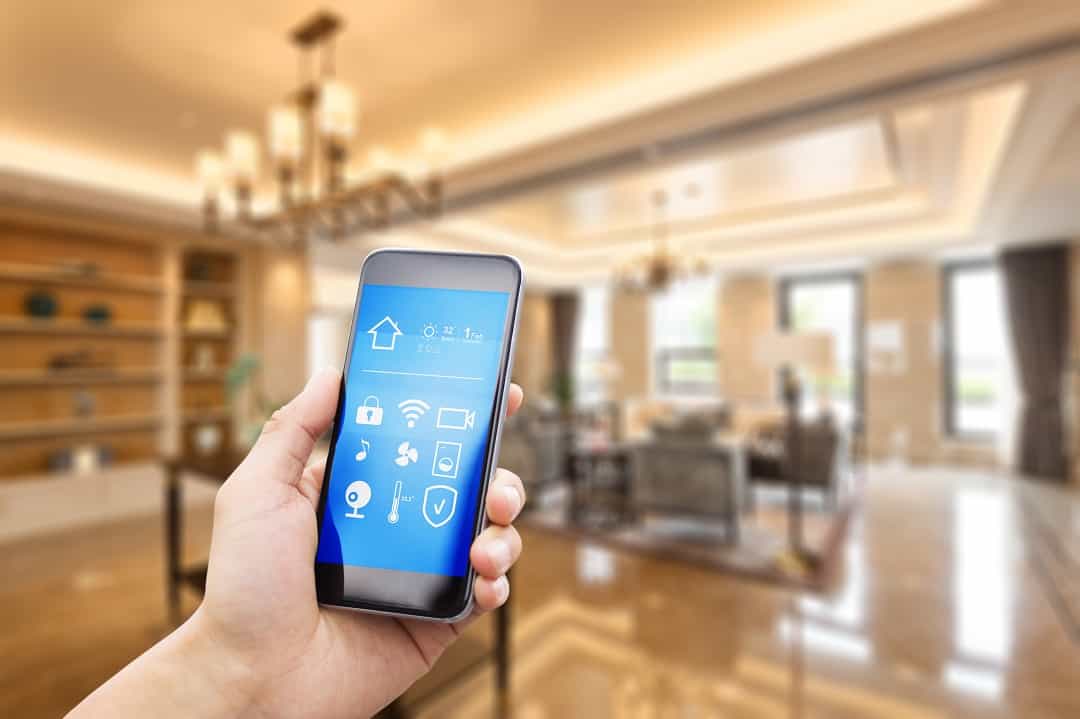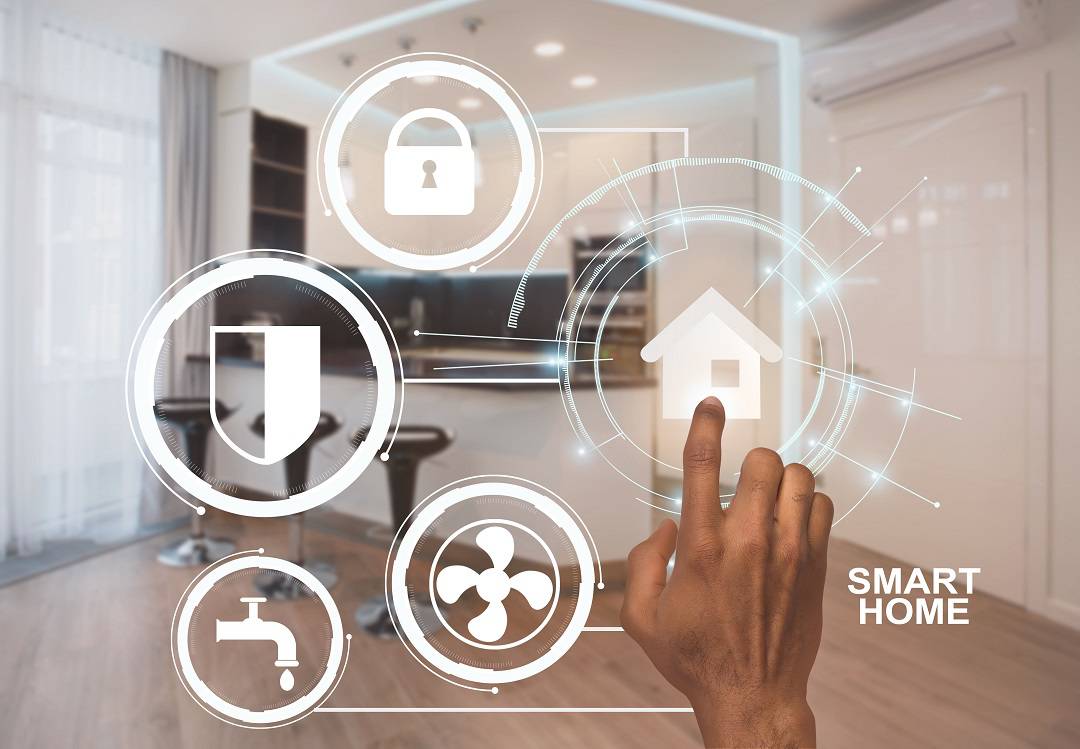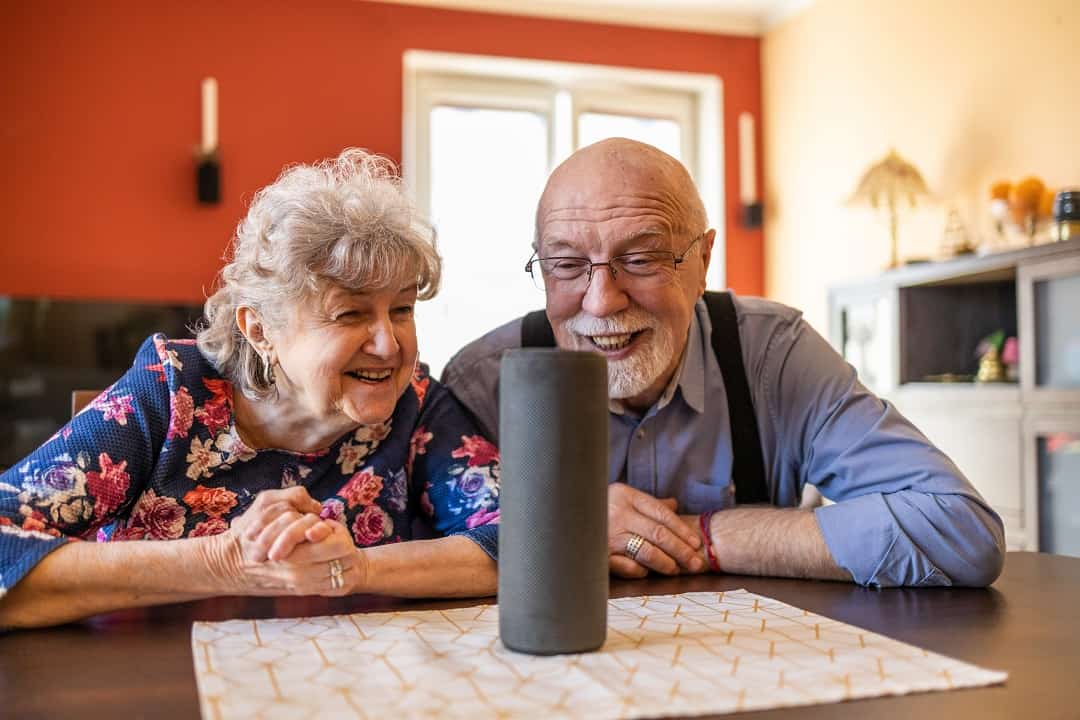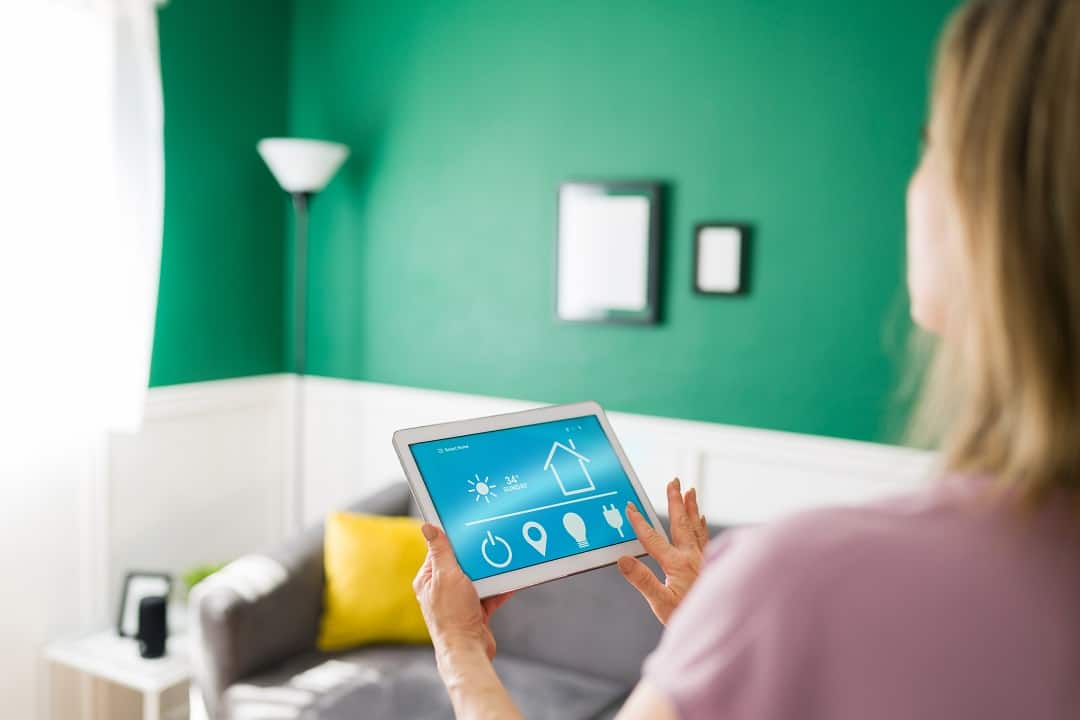Are you tired of having “dumb” lighting in your home? Well, it’s time to brighten things up and make a smart choice with smart lighting! In today’s blog post, we will be exploring the incredible benefits of smart lighting and why it’s a game-changer for your home. From enhancing the ambiance to saving energy and even boosting your security, smart lighting offers a whole new level of convenience and control. So if you’re ready to step into the future of lighting, keep reading to discover how smart lighting can transform your living space.
What is Smart Lighting?
Smart lighting is a revolutionary technology that offers numerous advantages over traditional lighting systems. With smart lighting, you can control the brightness, color, and even the scheduling of your lights using a smartphone or voice commands. This level of control brings a new level of convenience and customization to your home or office lighting.
Smart lighting works by connecting light fixtures, smart plugs, and smart bulbs to a network, allowing them to be controlled remotely through a smartphone or voice commands. This connectivity enables users to adjust the brightness, color, and timing of their lights with ease.
There are several technologies that enable smart lighting, each with its own advantages. Wi-Fi enabled bulbs are one popular option. These bulbs connect directly to your home’s Wi-Fi network, allowing you to control them through a dedicated mobile app. This gives you the flexibility to adjust your lights from anywhere, even when you’re not at home.
Another technology commonly used in smart lighting is Zigbee and Z-Wave. These wireless communication protocols enable devices to communicate with each other, creating a mesh network. With Zigbee or Z-Wave, you can control multiple lights simultaneously, creating dynamic lighting scenes or automating lighting based on specific triggers.
Voice control integration is another exciting feature of smart lighting. By integrating your smart lights with voice assistants like Amazon Alexa or Google Assistant, you can control your lights with simple voice commands. Just say the word, and your lights will turn on, off, or adjust to your preferred settings.
The Benefits of Smart Lighting
One of the key benefits of smart lighting is its energy efficiency. Smart bulbs, smart plugs, and fixtures are designed to be highly energy-efficient, using LED technology that consumes less electricity and lasts longer than traditional incandescent bulbs. This not only helps you save on your energy bills but also reduces your carbon footprint, making it an environmentally-friendly choice.
Another advantage of smart lighting is the convenience and control it offers. You can easily adjust the lighting in different areas of your home or office to create the desired ambiance for any occasion. Whether you want bright lights for productive work or a cozy, warm glow for relaxation, smart lighting can cater to your preferences with just a few taps on your smartphone.
Smart lighting can also significantly enhance the security of your property. With features like motion sensors and timers, you can program your lights to turn on and off at specific times, even when you’re away. This creates the illusion of an occupied home, deterring potential burglars and providing you with peace of mind.
With smart lighting, you can enjoy a more convenient and personalized lighting experience. Whether it’s adjusting the lighting to match your mood, scheduling lights to turn on and off automatically, or controlling them with just your voice, smart lighting offers endless possibilities to enhance your living space.
Smart Lighting FAQ
Can smart lighting save energy and reduce electricity bills?
Yes, smart lighting can indeed save energy and reduce electricity bills. Smart lighting systems are designed to be energy-efficient and use advanced technology such as LED bulbs, sensors, and timers to optimize energy consumption. By automatically adjusting the brightness and turning off lights when not in use, smart lighting eliminates the need for manual control and reduces unnecessary energy waste. Additionally, many smart lighting systems allow users to set schedules or use motion sensors to ensure lights are only on when needed. This not only helps to lower electricity bills but also contributes to a more sustainable and eco-friendly lifestyle.
Is smart lighting compatible with voice assistants like Alexa and Google Home?
Yes, most smart lighting is compatible with voice assistants like Alexa and Google Home. In fact, this is one of the key benefits of smart lighting systems. With the integration of voice assistants, you can control your lights using simple voice commands. This adds convenience and makes it easy to adjust the lighting in your home without having to physically operate switches. Whether you want to dim the lights, change the color, or turn them on and off, you can simply ask your voice assistant to do it for you. This seamless integration between smart lighting and voice assistants enhances the overall smart home experience and brings a new level of convenience to your daily life.
Are there different types of smart lights available?
Yes, there are different types of smart lights available on the market today. Smart lights come in various forms, including smart bulbs, smart switches, smart light strips, and adding smart plugs to a “dumb” light fixture. Smart bulbs are traditional light bulbs that can be controlled remotely using a smartphone or a voice assistant. They can also change colors and brightness levels, allowing you to set the perfect ambiance for any occasion. Smart switches, on the other hand, replace your existing light switches and can control multiple lights at once. This is a great option if you want to automate an entire room or area. Smart light strips are flexible strips of LED lights that can be placed under furniture or along walls to create stunning lighting effects. They can be controlled remotely and offer a wide range of colors and patterns. Smart plugs are small plugs that go between a dumb light fixture’s power plug and the outlet’s power plug. These control if the light fixture ( or other electronic device ) should be receiving power or not. With this, you can turn on and off a dumb light fixture via your smart home controller. With the variety of smart lights available, you can easily find the perfect option to suit your needs and preferences.
How easy is it to install and set up smart lighting?
Installing and setting up smart lighting is incredibly easy and user-friendly. Most smart lighting systems are designed with DIY installation in mind, so you don’t need to be an expert or hire a professional to get started. The process typically involves replacing your existing light bulbs or fixtures with smart versions and then connecting them to a central hub or bridge. This can usually be done without any wiring or complicated installation procedures. Once the physical installation is complete, you can easily set up and control your smart lighting system through a dedicated app on your smartphone or tablet. The app will guide you through the process and allow you to customize your lighting preferences, such as setting schedules, adjusting brightness, and even changing colors. Overall, smart lighting offers a hassle-free and convenient way to enhance your home’s lighting experience.
Can smart lighting be controlled remotely using a smartphone or tablet?
Yes, smart lighting can be easily controlled remotely using a smartphone or tablet. With the advancement of technology, smart lighting systems are designed to connect to your home’s Wi-Fi network, allowing you to control the lights from anywhere in the world. By downloading the compatible app on your smartphone or tablet, you can adjust the brightness, change colors, set schedules, and even turn the lights on or off with just a few taps on your screen. This feature is not only convenient but also offers an added layer of security, as you can create the illusion of someone being home when you’re away by remotely controlling the lights.
Does smart lighting offer customization options like different colors and brightness levels?
Yes, some smart lighting offers a wide range of customization options, including different colors and brightness levels. This does depend on the device you choose and the features it has available of course. With traditional lighting, you are limited to a single color and fixed brightness level. However, some smart lighting systems, such as those controlled by apps or smart home assistants like Alexa or Google Home, allow you to easily adjust the color and brightness to suit your mood or preference. Whether you want to create a cozy and warm ambiance or a vibrant and colorful atmosphere, smart lighting gives you the flexibility to customize your lighting experience with just a few taps or voice commands. Additionally, some smart lights even offer the ability to create schedules or scenes, allowing you to automate your lighting based on certain activities or time of day. So, whether you’re hosting a party, watching a movie, or simply relaxing at home, smart lighting can enhance your environment and make it more personalized and enjoyable.
Are there any security features in smart lighting systems?
Yes, smart lighting systems offer a range of security features to enhance the safety of your home. One key feature is the ability to schedule your lights to turn on and off at specific times, even when you’re away. This creates the illusion that someone is home, deterring potential burglars. Additionally, some smart lighting systems can be integrated with security cameras or motion sensors, allowing the lights to automatically turn on when motion is detected, providing increased visibility and deterring intruders. With these security features, smart lighting systems offer an added layer of protection and peace of mind for homeowners.
Can smart lighting be integrated with other smart home devices?
Yes, smart lighting can be easily integrated with other smart home devices. In fact, one of the major advantages of smart lighting is its compatibility with various home automation systems. Whether you have a smart speaker, a smart tv, or even a smart security system, you can effortlessly sync your smart lighting with these devices to create a truly interconnected smart home experience. This means you can control your lights using voice commands, automate lighting based on certain triggers or conditions, and even synchronize your lighting with other smart devices to enhance security, energy efficiency, and convenience. The ability to integrate smart lighting with other devices makes it a versatile and powerful addition to any smart home setup.
Are there any disadvantages or limitations of using smart lighting?
Yes, there are a few disadvantages and limitations to consider when using smart lighting. One potential limitation is the initial cost. Smart lighting systems can be more expensive than traditional lighting options, as they require special bulbs, hubs, and other equipment. Additionally, some smart lighting systems ( like replacing light switches ) may require professional installation, which can add to the overall cost. Another limitation is the reliance on technology. If there is a power outage or a problem with your Wi-Fi network, you may temporarily lose control over your smart lighting system. Compatibility can also be an issue. Not all smart lighting systems are compatible with each other or with other smart home devices, so it’s important to do your research and ensure that your chosen system will work well with your existing setup. Despite these limitations, many people find that the benefits of smart lighting outweigh any drawbacks.
What is the lifespan of smart light bulbs and do they require special maintenance?
The lifespan of smart light bulbs can vary depending on the brand and type of bulb you choose. On average, most smart light bulbs last anywhere from 15,000 to 25,000 hours, which is significantly longer than traditional incandescent bulbs. This means that you won’t have to worry about changing them as frequently, saving you time and money in the long run. As for maintenance, smart light bulbs typically don’t require any special treatment. Just like regular light bulbs, you’ll want to handle them carefully during installation and avoid excessive twisting or dropping. However, once they’re installed, you can control and adjust them using your smartphone or voice commands, making it easier than ever to set the perfect lighting ambiance in your home.
Can smart lighting be used outdoors?
Yes, smart lighting can definitely be used outdoors! In fact, many smart lighting systems are specifically designed to be weatherproof and withstand the elements. Just be sure to check your chosen device to make sure it states it’s useable outside. This means you can easily enhance your outdoor spaces, such as your garden, patio, or porch, with smart lighting. With outdoor smart lighting, you can remotely control your lights, set schedules, and even integrate them with other smart devices like motion sensors or cameras. Imagine being able to turn on your outdoor lights from your smartphone when you arrive home late at night or creating a welcoming ambiance for your backyard gatherings with just a few taps on your smart device. Outdoor smart lighting not only adds convenience and security but also opens up a whole new world of creative lighting possibilities for your outdoor areas.
In Summary
Whether it’s the convenience of controlling your lights remotely or the energy-saving benefits, smart lighting truly has the potential to transform the way we illuminate our spaces. So, if you’re ready to embrace a more efficient and intuitive lighting solution, I encourage you to explore the wide range of smart lighting options available.




